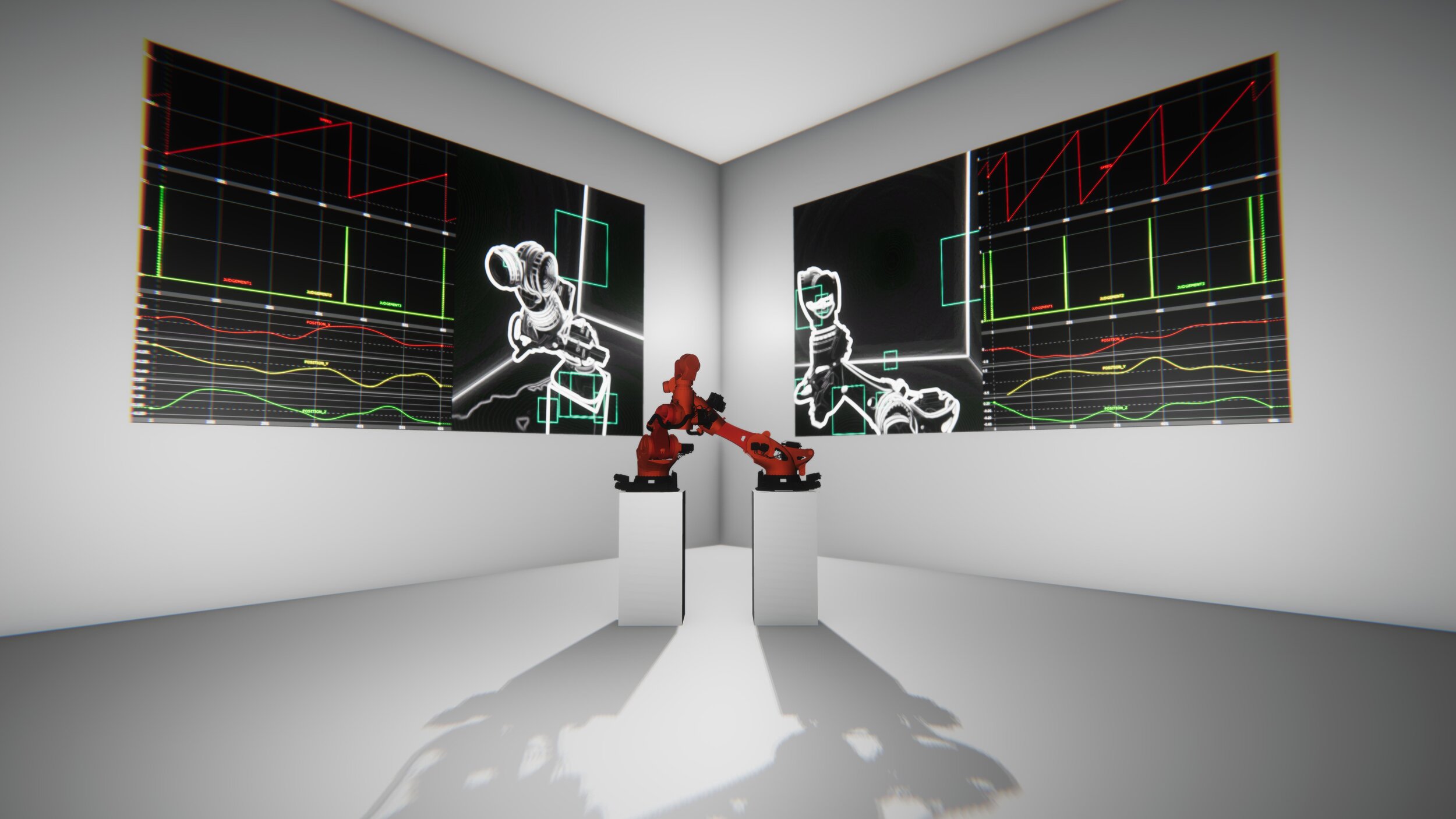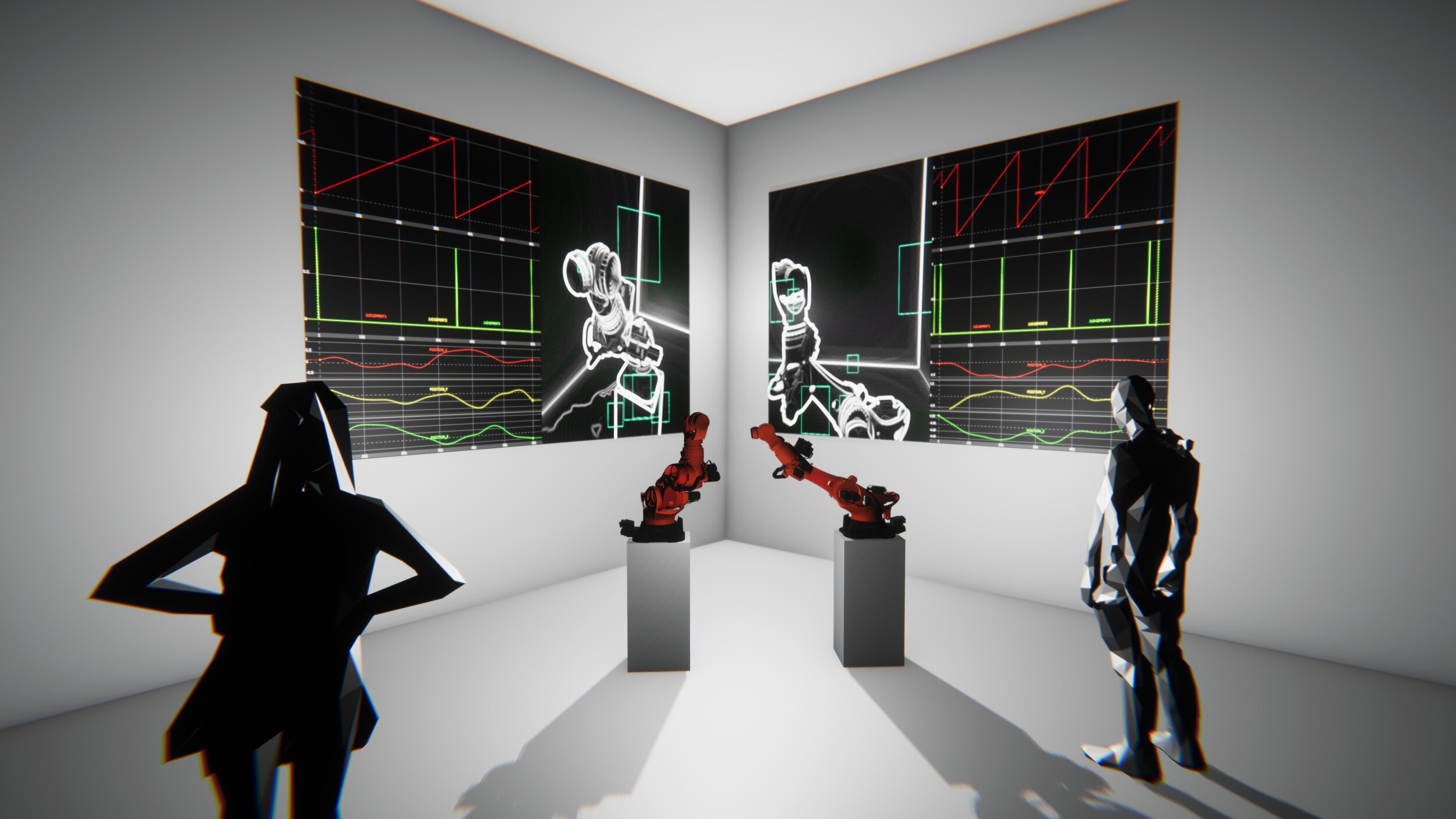gestalt generation (no.1) features two virtual robotic arms controlled by two AIs. The robotic arms are moving within a Unity virtual environment while learning from each other in realtime. On the AI side, the robotic arms are controlled by a Reinforcement Learning (Proximal Policy Optimization, PPO-2). The reward scheme is build on the idea that two arms should move closer to each other, while not colliding. Hence, the robotic arms are training two different PPO-2 models in realtime by moving within a Unity environment. The audience observes the trial and errors of two AIs in a gallery setting.
The virtual stage features two robotic arms, which symbols the oncoming automation of labour, learning to touch one another and share space. This fragile becoming is the ultimate process-work where the machines rigorously exhaust possible outcomes as they begin to “sense” one another over large timescales. To us— spectators, it looks like a brittle but enticing dance filled with potential energy.
While we have seen burgeoning of artworks employing artificial intelligence in the last several years, most focus on the “result.” Instead, we desire to show an audience the process of artificial learning, where failure and catharsis happen at strange and unusual intervals.
The artwork transposes machine learning to a human time scale and expose the liminal space where “intelligence” is formed. The pairs of robots set out to discover one another with a limited number of “collisions” allowed. As a kind of durational “dance” work for machines, audience members can check in on the robots at any time of the day to see how they have learned since their last interaction. They may witness surprising new motions or behaviors. They may find them close to failure or succeeding beyond their wildest imagination. The month-long stream is an experiment unfolding in real-time.
The artwork approaches machine learning and artificial intelligence from a perspective that highlights the mechanisms of learning, and the artistic process of how to teach computers.
- Remy Siu and Kivanc Tatar 2021
photo by Anpis Wang



